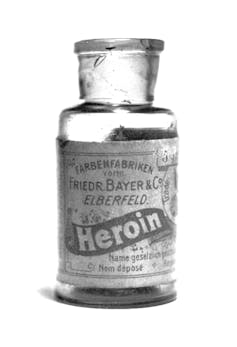Why treating addiction with medication should be carefully considered
The U.S. has had multiple drug epidemics, and, until recently, has not had evidence-tested ways to help people. That has changed. New medicines can help. But other medical issues should also be addressed.

When a patient has diabetes, doctors typically prescribe insulin, along with diet and exercise. When a patient has high blood pressure, we prescribe medication, and we also reinforce the importance of healthy eating, exercise, weight loss and quitting smoking.
When it comes to the disease of opioid addiction, however, some critics describe the use of medication as merely substituting one opioid for another, preferring instead total abstinence. Others see pharmacotherapy as the most critical component in treating the current opioid epidemic.
More than 2 million people in the U.S. have an opioid abuse disorder, yet only a small fraction actually receive treatment. For those who do, our society uses a specific term to refer to the medication part: “medication-assisted treatment,” or MAT.
The medications currently approved to treat opioid addiction act on the brain’s opioid receptors by either substituting as a less rewarding drug or blocking the euphoric effects of opioids. In either case, the goal is to decrease the use of the more addictive and lethal opioids and stop the cycle of addiction.
As with any illness, the goal should be to have patients on the least amount of medication needed. But sometimes, as with diabetes or heart disease, medications are needed in concert with other treatment.
To me, even the name “medication-assisted treatment” is problematic: We’re treating addiction differently than other diseases, due to the stigma that’s always surrounded it.
As medical director of the UF Health Florida Recovery Center, I consider medication to often be part of a multi-pronged treatment approach for many patients suffering from opioid addiction. Each person is different, and we need to individualize treatment. While using medicine is often important, it is not a panacea. Here’s why we need to carefully consider how and when we use medications, for all types of addiction and mental health issues.
A nation with a long history of opioid use
Prior to the Civil War, morphine was synthesized to treat pain. This, combined with advancements in anesthesia, exposed a great number of soldiers to opioids. Following the war, addiction was called “the soldier’s disease” or “the Army’s disease.”
Soldiers said the drug not only relieved physical pain, but also the emotional pain of their wartime experience. Even then, the wounded and those who treated them recognized that opioids relieved both physical and psychic pain.

Our country’s first heroin epidemic began in the late 1800s. This was followed by the Harrison Narcotics Act of 1914, which stated it was not in good faith for physicians to treat heroin addiction with morphine, as addiction was not considered a disease then. It was illegal for physicians to use opioids to treat opioid addiction, and many physicians went to prison when they did.

In the 1920s and ’30s, people who were caught “doctor shopping” to get opioid prescriptions were sent to “narcotic farms” in Lexington, Kentucky, and Fort Worth, Texas, for treatment. Once released, most relapsed.
In the 1950s and ’60s, U.S. doctors began the practice of methadone maintenance, initiated in large part to reduce urban crime.
Another shift in opioid usage happened in 2001. The Joint Commission on Accreditation of Healthcare Organizations first established standards for pain assessment and treatment. Though the standards did not state that pain needed to be treated like a vital sign, some organizations implemented programs by making pain “the fifth vital sign.” Doctors began to treat pain more liberally, exposing more sufferers of pain to opioids.
Today, the U.S. has about 5 percent of the world’s population, and we use an estimated 90 percent of the world’s prescribed pain medications.
Today’s opioid crisis has been the deadliest yet. More than 64,000 Americans lost their lives to drug overdose in 2016 – about two-thirds were from opioids. Most of the other overdose deaths were from central nervous system depressants like Xanax and alcohol, highlighting the importance of not forgetting the risk of other drugs.
Pain medications as gateways
For those who become addicted to painkillers, heroin becomes attractive because it is cheaper and widely available. Because of this, overdose deaths from prescription opioids decreased about 2010, while there was a precipitous rise in overdoses of heroin and fentanyl, a synthetic narcotic sometimes sold on the street as heroin.
Fentanyl is extremely potent; it’s used in the operating room to put people under anesthesia. The sharpest increase in number of deaths – an estimated 20,000 deaths – was due to fentanyl.
Undoing the damage a slow process
Modern-day MAT stems from the 2002 Food and Drug Administration approval of buprenorphine for the treatment of opioid withdrawal and maintenance. Buprenorphine is a partial opiate agonist, or a drug that operates as an opioid, but with a ceiling effect to help significantly decrease the chance of respiratory arrest from overdose. Unlike methadone, which must be dispensed in a highly structured clinic, buprenorphine can be prescribed in a doctor’s office on an outpatient basis.
According to the National Institute on Drug Abuse, medications are an important element for many patients with opioid addiction. They are especially effective when combined with counseling, other behavioral therapies and 12-step recovery programs like Narcotics Anonymous.
Research shows that MAT results in what we addiction specialists call harm reduction. This means that while some of these patients may not be ready to be opioid-free, we want to keep them alive and achieving the greatest level of functioning. We don’t want them engaging in self-destructive behaviors like relapsing to street drugs, committing crimes, overdosing or acquiring infectious diseases like HIV. And there’s good evidence, some of which was presented as recently as Jan. 23, 2018, that medications have helped decrease HIV, hepatitis C and crime, as well as improve function.
It’s not that abstinence is not a goal, but the aim of MAT is rather to stop the devastating consequences of this terrible illness and keep the patient alive and engaged in the process of treatment. Many have serious, co-occurring health problems, such as mental illness and a history of trauma. They may not yet have the ability to deal with the physical and emotional discomfort of being opioid-free.
In November 2017, the FDA approved a new formulation of buprenorphine to treat opioid addiction. This provides a longer-acting option, which can be effective up to six months, to stabilize a patient by decreasing cravings, which then discourages use.
Larger treatment plan important
It is true, nonetheless, that if not done carefully, these MAT medications can be abused themselves. If taken with other drugs or in larger amounts, these drugs can cause overdoses, too.
In my view, the goal should be prescribing the least amount of medication one needs. Regardless of what medication is used during treatment, we should be pushing patients to be the best versions of themselves and to live their fullest lives possible. I favor scrapping the debate over whether we are abstinence-based or medication-based and instead asking, “What does this individual need?”
Then one day, I hope, we can shake the “medication-assisted” and just call it what it is: treatment.
Scott Teitelbaum does not work for, consult, own shares in or receive funding from any company or organisation that would benefit from this article, and has disclosed no relevant affiliations beyond their academic appointment.
Read These Next
As DOJ begins to release Epstein files, his many victims deserve more attention than the powerful me
Powerful men connected to Jeffrey Epstein are named, dissected and speculated about. The survivors,…
Autocracies in transition: In 2025, Cameroon and Tanzania rulers clung to power — but look more vuln
The countries, whose respective leaders recently won widely disputed elections, offer contrasting examples…
It’s more than OK for kids to be bored − it’s good for them
Boredom is a healthy part of life. Experiencing it can help children learn to set goals and make plans.






